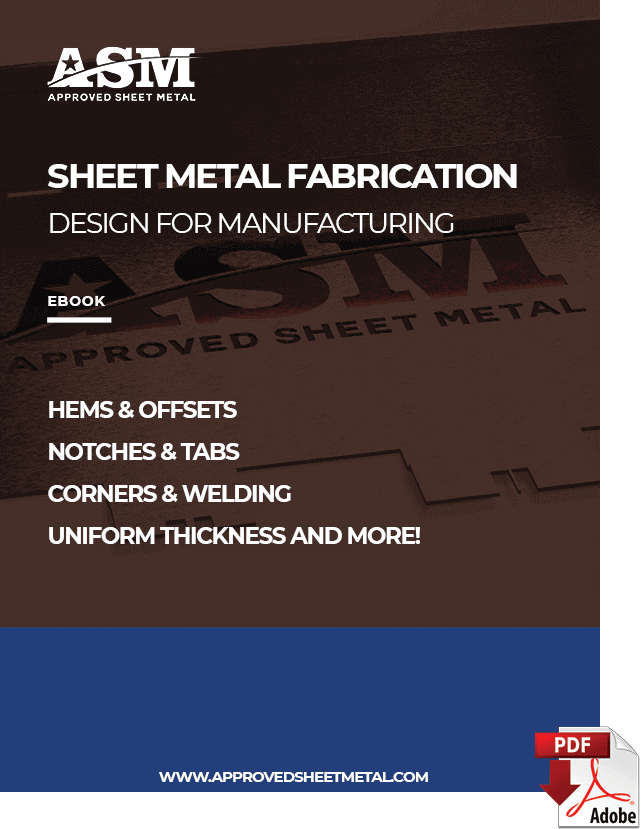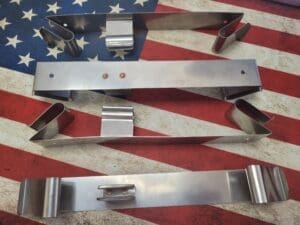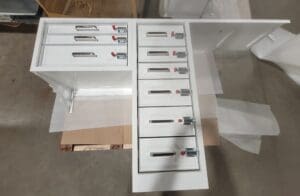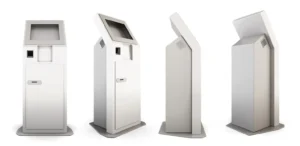Last updated on June 14th, 2024 at 08:46 am
Did you know that 3D CAD technology can cut lead times on sheet metal prototypes by up to 50%?
As a sheet metal shop committed to continuously improving the customer experience, Approved Sheet Metal is always looking for ways to deliver parts faster than ever. One way we do that is by passing valuable information on to our customers.
Here’s something you may not know: We’ve found that receiving a CAD file at the time of an RFQ allows us to turn around formed sheet metal prototypes in just 3 days.
Table of Contents
- 1 4 Ways 3D CAD Files Accelerate Lead Times for Sheet Metal Prototypes
- 2 Sheet Metal Design for Manufacturing
- 3 Slashing Sheet Metal Part Fabrication Lead Time FAQ
- 3.0.1 How can 3D CAD technology accelerate lead times for sheet metal prototypes for your fabricator?
- 3.0.2 What benefits does a 3D CAD model offer in comparison to 2D drawings when ordering sheet metal prototypes?
- 3.0.3 How does the integration of 3D CAD files with automated software, like laser cutters and press brakes, impact lead times at Approved Sheet Metal?
- 3.0.4 What is the typical lead time for sheet metal prototypes when a 3D CAD file is provided at the time of the RFQ at Approved Sheet Metal?
- 3.0.5 If I don't provide a CAD file with my RFQ, how will Approved Sheet Metal handle my order?
4 Ways 3D CAD Files Accelerate Lead Times for Sheet Metal Prototypes
Here’s a look at why CAD files are such huge time-savers at our sheet metal shop:
1. Provides full visibility into a part.
Although 2D drawings are critical for identifying accurate tolerances and other dimensional specifications, a 3D CAD model enables us to see every angle of your part. The ability to zoom in on the minute details simply isn’t possible with a drawing!
2. Simplifies complicated parts and assemblies.
3D CAD models allow us to obtain projected views for complicated assemblies or hardware installations, which simplifies these processes significantly. We can visualize precisely how components will fit into each other, making it much easier to spot potential misalignments or areas that need adjustment.
3. Resolves design ambiguities.
We love collaborating with customers. But when you’re in a pinch, back and forth calls and emails can slow down your lead time. When we have a 3D CAD model, we can easily resolve design ambiguities and even take our own dimensions if certain specs aren’t included in the print.
4. Integrates into automated software.
At Approved Sheet Metal, we’re always up to date on the newest and most innovative technology. We use 3D CADfiles to program our cutting-edge equipment like our laser cutter and press brake:
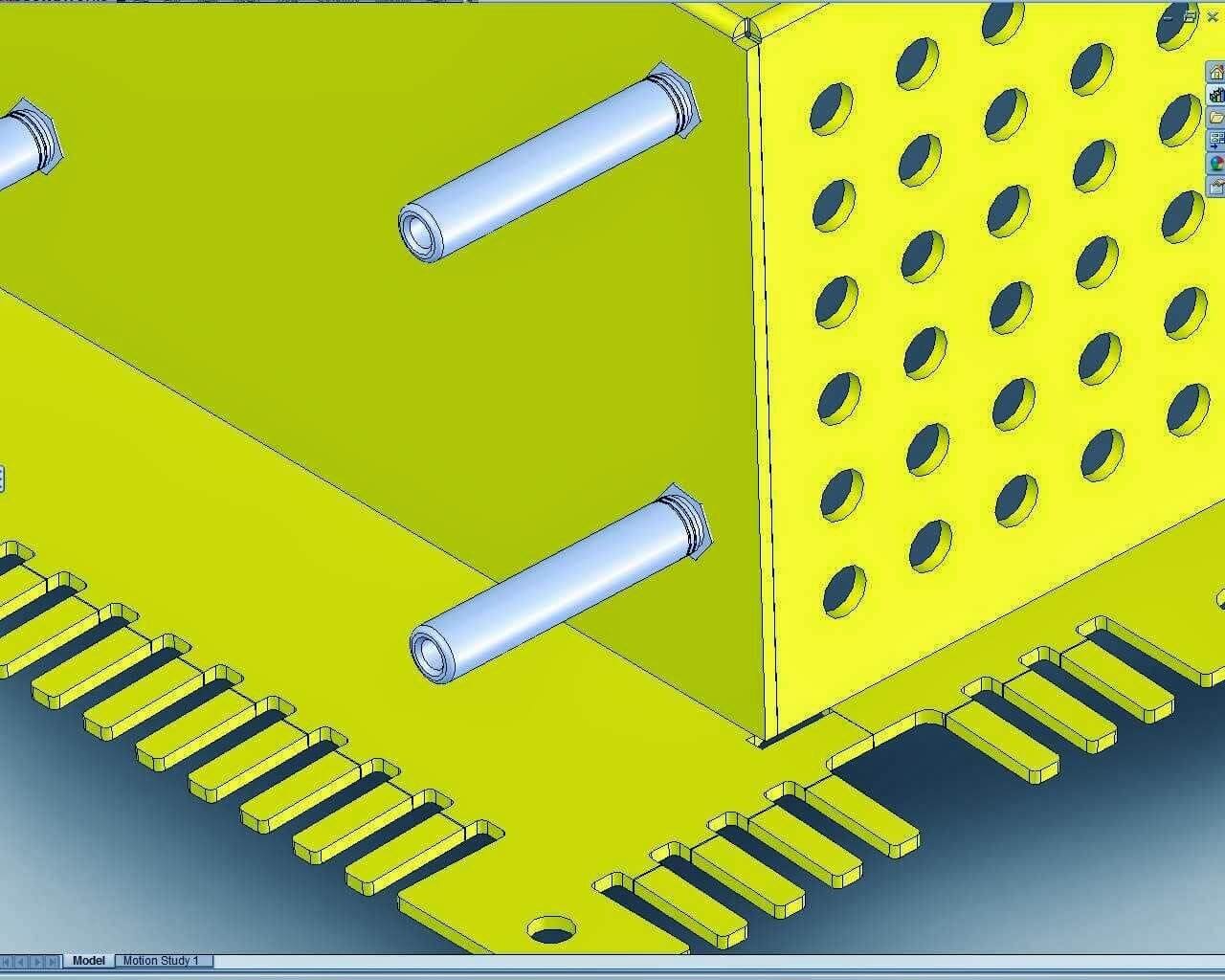
- Laser cutter. Our high-powered fiber laser runs on G-code, which is almost impossible to program by hand. Leveraging SOLIDWORKS integration, the G-code uses the data from a 3D CAD model to create a laser cut path. The alternative to this process would be drawing the laser cut path ourselves, which is not only incredibly inefficient, but also introduces the unnecessary risk of human error.
- Press brake. We use offline programming to virtually fabricate sheet metal prototypes and identify potential errors. 3D CAD integration helps us simulate a part to look for crashes, holes, deep boxes, and other issues. This fully digitized system prevents us from having to manually enter information, which saves time, minimizes the risk of human error, and optimizes the bending sequence to reduce the number of setups.
If you don’t provide a CAD file with your RFQ, we’ll convert your 2D drawings for you and take the time to verify a perfect match. But any time you can give us this information up front, we’ll happily guarantee a faster turnaround. Request a quote today and enjoy the benefits of working with a forward-thinking sheet metal shop!
Slashing Sheet Metal Part Fabrication Lead Time FAQ
3D CAD technology accelerates lead times by providing full visibility into the part, simplifying complicated assemblies, resolving design ambiguities, and integrating with automated software, such as laser cutters and press brakes. This streamlines the manufacturing process, reducing lead times.
A 3D CAD model offers benefits such as full visibility into the part, simplification of complex assemblies, quicker resolution of design ambiguities, and integration with automated software. Unlike 2D drawings, 3D CAD models allow for in-depth examination of every angle, simplifying the manufacturing process.
Integrating 3D CAD files with laser cutters and press brakes significantly reduces lead times. It allows for precise programming of equipment, minimizing human error and optimizing processes. This integration ensures quicker turnaround and high precision in sheet metal prototype production.
When a 3D CAD file is provided with the RFQ, Approved Sheet Metal can turn around formed sheet metal prototypes in just 3 days, significantly expediting the manufacturing process.
If a CAD file is not provided, Approved Sheet Metal will convert your 2D drawings and verify a perfect match. While this is possible, providing a CAD file upfront guarantees a faster turnaround, allowing the company to expedite the sheet metal prototype production process.

